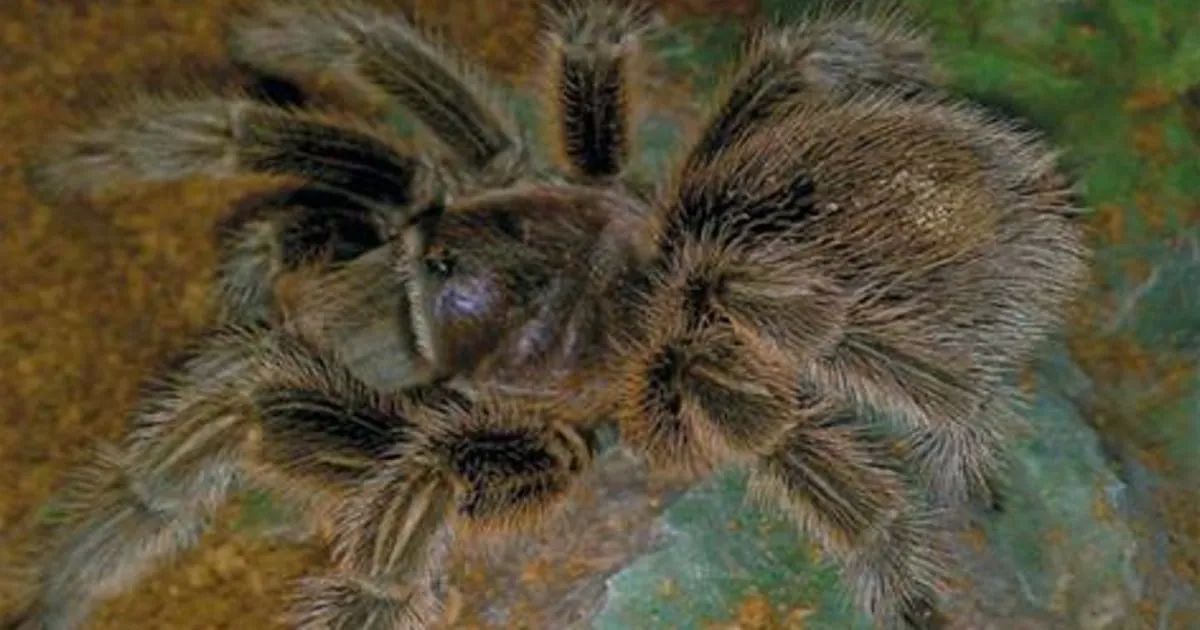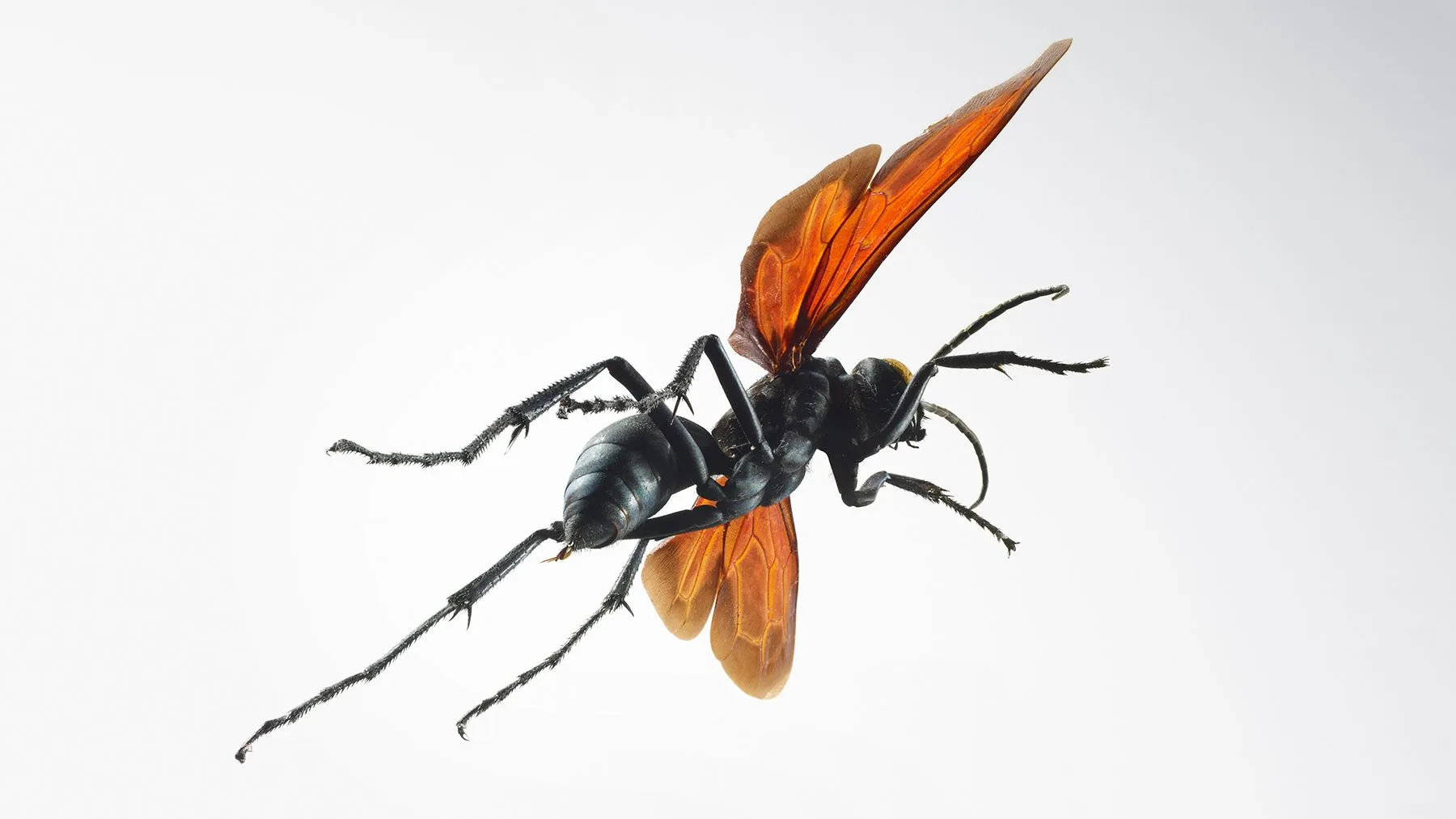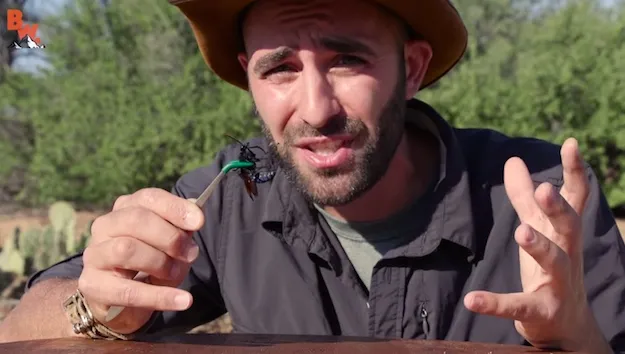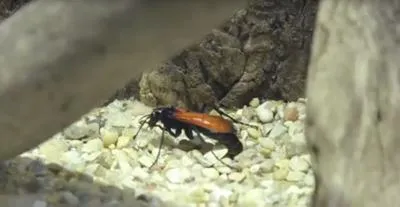What is a Tarantula Hawk and Why Do They Sting?
The tarantula hawk is a large, striking wasp known for its incredibly painful sting. These insects are found in various regions, including the southwestern United States. They are characterized by their striking appearance, typically possessing a black or blue body with orange wings. The tarantula hawk’s primary purpose for stinging is not to attack humans but to paralyze tarantulas, which they then use as hosts for their larvae. However, if a tarantula hawk feels threatened, it will not hesitate to use its sting in self-defense, and that’s what makes it important to know how to survive it. Understanding the tarantula hawk and the reasons behind its sting is the first step in ensuring your safety.
Tarantula Hawk Behavior Understanding Their Sting
Tarantula hawks are solitary creatures, and their behavior is primarily driven by the need to reproduce and survive. The female tarantula hawk is the one that actively hunts tarantulas and delivers the painful sting to paralyze them. The wasp then drags the paralyzed tarantula to a burrow, where it lays a single egg on the spider’s abdomen. Once the egg hatches, the wasp larva feeds on the living, but immobilized, tarantula. The male tarantula hawks are less aggressive and focus on mating. The tarantula hawk sting is notoriously painful, with some describing it as the worst pain imaginable, though the effects are usually not life-threatening to humans. The sting is a defense mechanism, and it’s important to understand their behavior to avoid confrontation.
The Severity of a Tarantula Hawk Sting

The severity of a tarantula hawk sting is primarily defined by the intense pain it causes. The pain is often described as excruciating and can last for several minutes. While the pain subsides relatively quickly, it is considered the most painful insect sting. The venom itself is not particularly toxic, and the sting is not typically fatal to humans. However, the pain can be debilitating, causing temporary paralysis, and severe discomfort. The intensity of the pain can vary depending on individual sensitivity, and where the sting occurs. It is important to remember that while the pain is significant, the effects are usually localized and will fade away in time. The real danger is the shock and what can cause someone to lose control or react in an unsafe manner, so it is important to be cautious and know what to do.
Symptoms of a Tarantula Hawk Bite
The symptoms of a tarantula hawk sting are mainly centered on the intense pain. Immediate symptoms include a sharp, burning sensation at the sting site, followed by excruciating pain that can spread throughout the affected area. The area may also experience localized swelling, redness, and warmth. Some individuals may also experience temporary paralysis or muscle weakness near the sting site. The pain typically peaks within a few minutes and can last for up to several hours. While systemic symptoms are rare, some individuals may experience mild nausea, dizziness, or anxiety due to the intense pain. It’s important to know what to expect in terms of symptoms, as this knowledge can help you manage the situation effectively.
Immediate Actions What to Do if You’re Stung
If you are stung by a tarantula hawk, there are several immediate actions you should take. The first step is to remain calm. While the pain is intense, it is usually not life-threatening. Try to move away from the area to avoid further stings. Assess the sting site and ensure that the stinger is not embedded in your skin. Unlike bee stings, tarantula hawks do not leave their stingers behind. If you are able, apply a cold compress or ice pack to the sting site to help reduce swelling and pain. Consider taking an over-the-counter pain reliever, such as ibuprofen or acetaminophen, to manage the pain. Watch for any signs of an allergic reaction, such as difficulty breathing, hives, or swelling of the face or throat. If you experience any of these symptoms, seek immediate medical attention.
Medical Treatment and When to Seek Help

Medical treatment for a tarantula hawk sting typically focuses on pain management and monitoring for any signs of an allergic reaction. If the pain is severe or does not subside within a few hours, a doctor may prescribe stronger pain medication. In rare cases, if an allergic reaction occurs, epinephrine may be administered, along with other supportive measures. It is important to seek medical attention if you experience any severe symptoms, such as difficulty breathing, dizziness, or widespread swelling. If the sting site becomes infected, characterized by increasing redness, warmth, or pus, you should also seek medical advice. Medical professionals can provide appropriate treatment to manage symptoms and prevent complications.
Long Term Effects and Recovery
The long-term effects of a tarantula hawk sting are generally minimal. The primary concern is the intense pain, which typically subsides within a few hours. The swelling and redness at the sting site may persist for a day or two. In most cases, there are no lasting physical effects. However, some individuals may experience psychological effects, such as anxiety or fear of stinging insects. Recovery from a tarantula hawk sting is usually straightforward, and most people recover completely within a few days. Following the recommended first aid and medical treatment guidelines can help ensure a smooth and speedy recovery. Keep the area clean and avoid scratching the sting site to prevent infection.
Preventing Tarantula Hawk Encounters
Preventing tarantula hawk encounters is the best way to avoid their painful sting. These wasps are most active during the day, so it is wise to be cautious, especially during warmer months. When hiking or spending time outdoors in regions where tarantula hawks are present, wear protective clothing, such as long sleeves, long pants, and closed-toe shoes. Avoid disturbing their nests or habitats, which are often located in dry, arid areas. Be aware of your surroundings and watch for these distinctive wasps. If you encounter a tarantula hawk, remain calm and move away slowly. Avoid sudden movements that might startle the insect. By taking these preventive measures, you can significantly reduce your risk of being stung by a tarantula hawk.
First Aid for Tarantula Hawk Sting

If you are stung by a tarantula hawk, the following first aid steps are recommended. First, remain calm and move away from the area to avoid additional stings. Assess the sting site, looking for the stinger. Apply a cold compress or ice pack to the affected area to help reduce pain and swelling. Over-the-counter pain relievers, such as ibuprofen or acetaminophen, can help manage the pain. Elevate the affected limb if possible. Watch for any signs of an allergic reaction, such as difficulty breathing or swelling. If you experience any severe symptoms, seek immediate medical attention. Keeping the sting site clean and dry helps prevent infection. By following these steps, you can effectively manage the immediate effects of a tarantula hawk sting.
What to Do After a Tarantula Hawk Bite
After a tarantula hawk sting, it is important to focus on recovery and long-term prevention. Continue to monitor the sting site for any signs of infection, such as increased redness, warmth, or pus. Avoid scratching the sting site, as this can increase the risk of infection. Be aware of any lingering psychological effects, such as anxiety or fear. If you experience these symptoms, consider seeking support from a mental health professional. Take steps to prevent future encounters with tarantula hawks, such as wearing protective clothing and being aware of their habitats. Remember, while the pain is intense, the effects are usually temporary. By following these steps, you can ensure a smooth recovery and reduce the likelihood of future stings. The best approach is awareness and avoidance to enjoy the outdoors safely.
